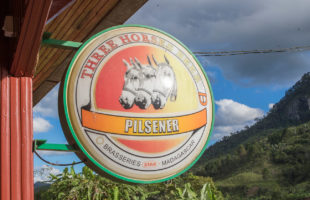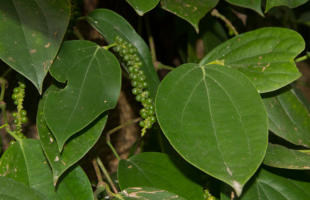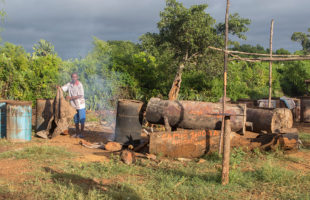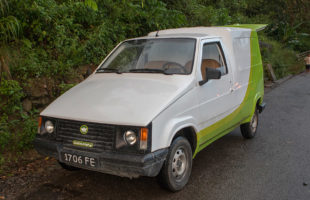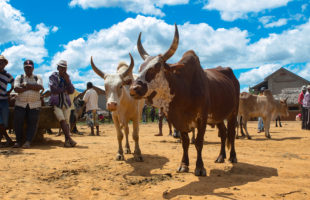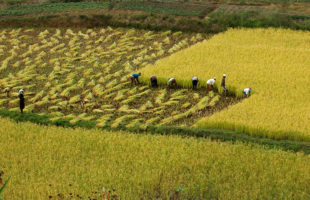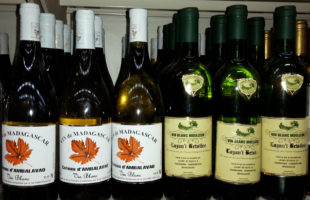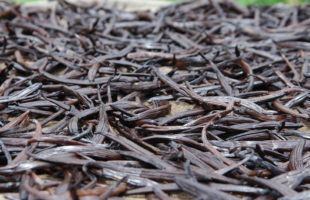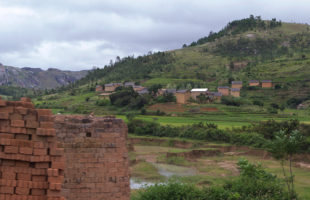Currently, there are very few types of beer in Madagascar. The most famous and widespread beer is THB. The abbreviation stands for Three Horses Beer. It is a pilsner that has been brewed in Madagascar since 1958. THB can be found even in the smallest villages – and usually chilled. It has 5.4% alcohol and is made from water, barley …
LesenWhere the pepper grows
Salt and pepper: These are probably the spices that every person worldwide knows and eats almost daily in their meals. In the well-assorted spice trade you will find different varieties: green, black, white or red pepper. But only one single plant produces this variety of real pepper: the black pepper (Piper nigrum). The name is admittedly somewhat misleading. It is …
LesenToaka gasy – The rum that resurrects the dead
Madagascar is famous for its rum. Besides commercially in fabrics produced rum such as Dzama, there still is another very special kind of rum on the island: Toaka gasy. The word simply means “Malagasy rum” and points to a traditionally manufactured drink. Rumor has it that it may even resurrect the dead. Malagasy law only allows production of Toaka gasy …
LesenKarenjy – The first Malagasy car
As a traveller, you will rarely see, but surely recognize it once seen in Madagascar: The Karenyi. A bulky car, reminiscent of some kind of mixture between a kubelwagen and a colourful soapbox. It could even be part of the ideas of someone producing Lego toys normally. But behind this bizarre vehicle hides a true Malagasy story. In 1984, the …
LesenMadagascar’s secret emblem: The zebu
It is Madagascar’s secret emblem: The zebu (Bos taurus indicus), in Malagasy language omby. You can see them everywhere around the country, about 19 millions live on the red soil of the island. In Madagascar, zebus symbolize power, strength and particularly prosperity. An average zebu tips the scales at 300 to 400 kg – at an shoulder height of approximately …
LesenThe grain of life – Rice cultivation in Madagascar
Rice, in Malagasy vary, has in hardly any other country such an enormous relevance as in Madagascar. The island has one of the highest per capita consumption of rice worldwiede: On average, each Madagascan eats 120 kg rice per year. Thus Madagascar is in the lead far in front of typical rice cultivation countries like China, which has an average …
LesenViticulture in Madagascar
In 19th century yet, Jesuitical missionaries and with them, their knowledge about viticulture reached the island of Madagascar. In 1802, the botanist André Michaux cultivated vines of the sort “Isabelle” (Vitis labrusca) in the area around Ivondro for the first time – rather more due to curiosity than because of economical reasons. In 1845, the French man Jean Laborde produced …
LesenThe way of chocolate: Growing cocoa
Originally, the cocoa plant (Theobroma cacao, meaning „deities‘ dish“) does not come from Madagascar, but from Southern America. Yet the eighth continent offers best preconditions to cultivate cocoa. Today, Madagascan cocoa is considered one of the best available in the world. Accordingly, the harvest is very small: with an average of 3000 tons per year, Madagascar accounts for less than …
LesenFrom bean to spice – vanilla
The vanilla plant is actually an orchid and has been successfully cultivated in Madagascar for over a century. Although originally from Central America, Madagascar is now the world’s largest exporter of vanilla. But it will be a long way before the “queen of spices” lands in Europe. Vanilla grows particularly well wherever it is warm and very humid. Their tendrils …
LesenA life for bricks
A two-storey red brick house with wooden doors and unglazed windows: a perfectly common sight in the central highlands of Madagascar. Almost all houses between the many yellow shining rice fields are built of red bricks and plastered with clay. With the Europeans also the knowledge about the production of bricks came to Madagascar in the 19th century. It is …
Lesen MADAMAGAZINE Your Magazine about Madagascar
MADAMAGAZINE Your Magazine about Madagascar
